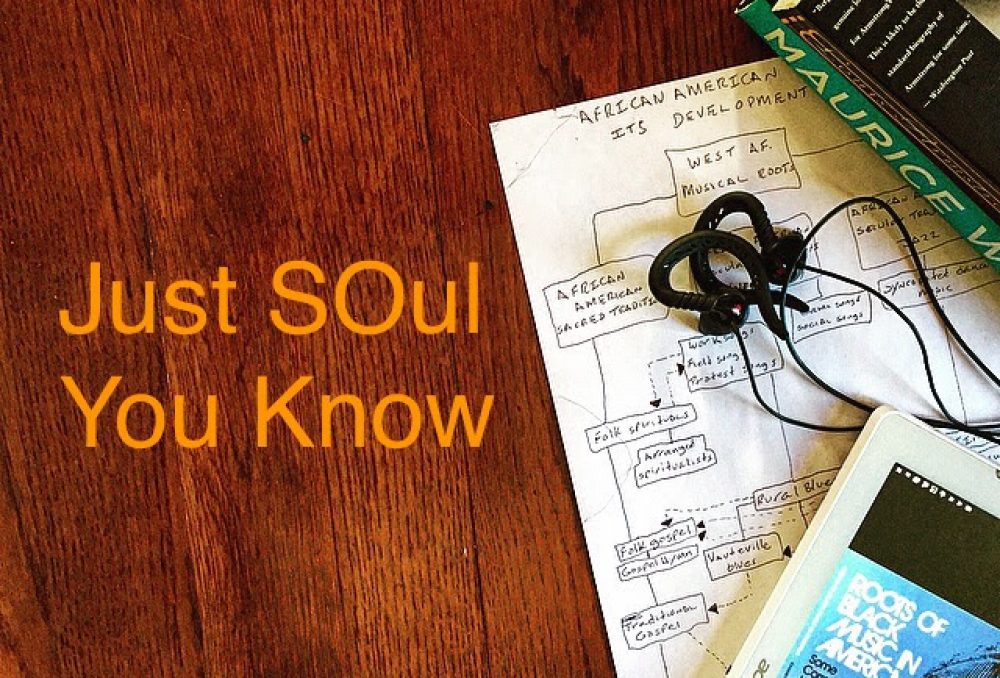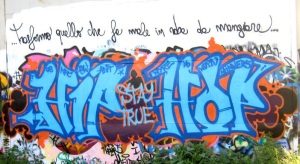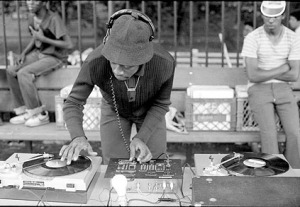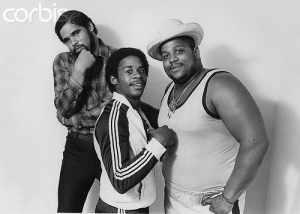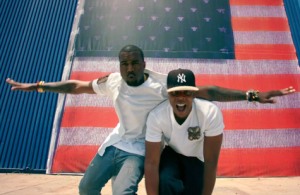Welcome back (again) to your Sunday iPod add, which will hence forth be called, “Your Sunday Playlist*.”
For those who indulge in and appreciate both hip-hop and post bebop jazz and at times wondered what sounds would emerge if these two genres collided head on; meshed their energies; twisted and tangled their rhythm and rhyme; or collaborate a freestyle from a common theme. Well wonder no more! Let me introduce you to Soweto Kinch! Kinch, according to his social media page is an “Award winning alto-saxophonist and MC” and “is one of the most exciting and versatile young musicians in both the British jazz and hip hop scenes.” Yes, Kinch has his feet firmly planted in both genres where he is capable and thriving.
A few months ago I, Mr. Johnny-come-lately, embarrassingly later than even George Colligan at jazztruth.blogspot.com, stumbled onto Soweto Kinch’s music (as I tend to do happily with plenty of artists) and was blown away by his fluid versatility and dexterity in both the hip-hop and post bebop jazz genres. Upon hearing his music, I was reminded of other artists who have dabbled in combining hip-hop with jazz, most notably A Tribe Called Quest’s album “Low End Theory,” which featured the iconic bassist Ron Carter amid stripped down jazz samples and certainly Guru’s “Jazzmatazz Vol. 1,” in particular, genre bending album, which employed heavy post bebop hitters such as saxophonist Brandford Marsalis, pianist Lonnie Liston Smith, vibist Roy Ayers, the late trumpeter Donald Byrd, and the late guitarist Ronny Jordan. While these albums elegantly blended the rhythmic lyrics of hip hop with syncopated drum grooves and bebop chord progressions, Kinch’s music, rather, abuts freestyle post bebop tracks next to freestyle hip hop jams, which allows the listener to hear the similarities in the music’s spontaneity and freedom. Kinch’s movement back and forth between the genres recalls the origins of both jazz and hip hop’s gritty sounds and street attitude. The magic and intention of jazz and hip hop is not lost on Soweto Kinch.
Vol. 1,” in particular, genre bending album, which employed heavy post bebop hitters such as saxophonist Brandford Marsalis, pianist Lonnie Liston Smith, vibist Roy Ayers, the late trumpeter Donald Byrd, and the late guitarist Ronny Jordan. While these albums elegantly blended the rhythmic lyrics of hip hop with syncopated drum grooves and bebop chord progressions, Kinch’s music, rather, abuts freestyle post bebop tracks next to freestyle hip hop jams, which allows the listener to hear the similarities in the music’s spontaneity and freedom. Kinch’s movement back and forth between the genres recalls the origins of both jazz and hip hop’s gritty sounds and street attitude. The magic and intention of jazz and hip hop is not lost on Soweto Kinch.
The first track of Kinch I stumbled onto was “Never Ending” from the album The New Emancipation. After this, I began a fever pitch search for more of Kinch’s music. I found all of his brilliant music and surprisingly some videos of his legendary rap battles on the streets of London (check it). Ultimately, I found his most recent album (recent to me) The Legend Of Mike Smith. This is a tightly put together concept album. Kinch described it as “an exploration of the seven deadly sins in the modern context. It also follows the travails of one young character, Mike Smith as he’s attempting to get signed by a major record label and curtail his normal style to see what he thinks they will find successful or appealing.” The album contains post bebop burners, spoken word, and heated rap, which all serve to drive a narrative a modern day morality tale. The Legend Of Mike Smith is compelling to listen to as any concept album out there.
This is a tightly put together concept album. Kinch described it as “an exploration of the seven deadly sins in the modern context. It also follows the travails of one young character, Mike Smith as he’s attempting to get signed by a major record label and curtail his normal style to see what he thinks they will find successful or appealing.” The album contains post bebop burners, spoken word, and heated rap, which all serve to drive a narrative a modern day morality tale. The Legend Of Mike Smith is compelling to listen to as any concept album out there.
So if the idea of Common meets Charlie Parker meets a 90s Greg Osby meets a Mos Def is intriguing, then take a listen and wonder no more!
Add some Soweto Kinch to your playlist. You will thank me later.
